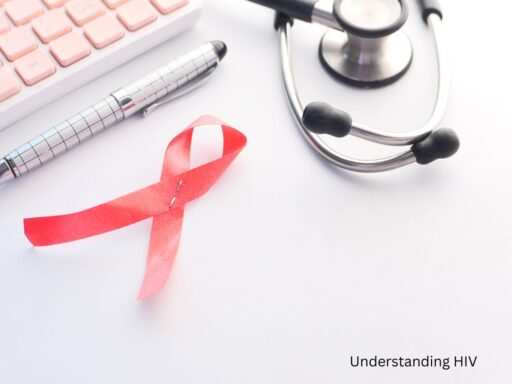Herpes Simplex Virus (HSV) is a common virus that comes in two main types: HSV-1 and HSV-2. HSV-1 causes oral herpes which means cold sores around the mouth and HSV-2 causes genital herpes. Both are super contagious and can be spread through direct contact with infected skin, mucous membranes or bodily fluids.
HSV is a lifelong infection. After the initial outbreak the virus stays dormant in the body and can reactivate and cause symptoms to come back. This can be triggered by stress, illness or a weakened immune system. Even without symptoms you can still spread HSV to others so it’s a tricky virus to manage and prevent.
How Does HSV Spread and What Are the Best Prevention Methods?
Herpes Simplex Virus (HSV) is a common virus with two main types: HSV-1 which causes oral herpes and HSV-2 which causes genital herpes. Both are super contagious and can be spread through direct contact with infected skin or bodily fluids. Understanding how HSV spreads and the best prevention methods is key to managing and reducing transmission.
How Herpes Simplex Virus Spreads
Herpes Simplex Virus spreads mainly through skin to skin contact. This can happen during oral, vaginal or anal sex, kissing and sharing utensils or personal items with someone who has the virus.
Even when symptoms are not visible Herpes Simplex Virus can still be transmitted – a phenomenon called asymptomatic shedding. This makes the virus hard to control as someone can unknowingly pass it to others.
One of the reasons Herpes Simplex Virus is so widely spread is that it can be contagious even when there are no symptoms. Asymptomatic shedding is when the virus is on the skin or mucous membranes but no symptoms are visible.
During this time the person may not even know they are contagious and can accidentally spread it. This is why awareness and education about Herpes Simplex Virus is key to preventing transmission.
Herpes Simplex Virus -1 which causes oral herpes can also cause genital herpes through oral genital contact. Herpes Simplex Virus -2 which causes genital herpes can also cause oral herpes through the same means. The cross infection between oral and genital areas makes the virus even trickier to manage.
Risk Factors for Herpes Simplex Virus
Anyone who has sex is at risk of genital herpes but some groups are more vulnerable. Genital herpes is more common in people with a vagina than those with a penis, partly because the vagina is more prone to small tears during sex which can allow the virus to enter. Non-Hispanic Black women are also more affected, studies show that one in two Black women have HSV-2.
Young adults, those who have unprotected sex and those with multiple sexual partners are also at higher risk of getting Herpes Simplex Virus . The virus can also be transmitted from someone who doesn’t know they have it, as many people with HSV are asymptomatic or have mild symptoms they don’t recognize as herpes.
Prevention
Preventing Herpes Simplex Virus transmission is a combination of behavioral, medical and open communication. Here are the ways to reduce the risk of spreading or getting HSV:
- Use Barrier Protection: Consistent and correct use of condoms or dental dams during sex can reduce the risk of HSV transmission. But remember, condoms don’t cover all areas where the virus can be shed so they are not 100% effective.
- Avoid Sexual Activity During Outbreaks: HSV is most contagious when sores are present. Avoid sex during outbreaks is crucial in preventing transmission. Even if no visible symptoms are present, it’s best to be cautious and consider not having sex during times of known asymptomatic shedding.
- Antiviral Medication: For those with HSV, taking daily antiviral medication can reduce the frequency of outbreaks and asymptomatic shedding. This in turn reduces the chances of passing the virus to others.
- Communication with Partners: Open and honest communication with sexual partners about HSV status is key. Partners should be informed of the risks and be involved in the decision making of prevention strategies such as use of protection and timing of sex.
- Regular Testing: Regular testing and screening for sexually transmitted infections (STIs) including HSV is important especially for those with multiple partners or those in high risk groups. Early detection can lead to better management and reduce the spread of the virus.
- Education and Awareness: Educating yourself and others about Herpes Simplex Virus is a big step in prevention. Knowing how the virus spreads, recognizing symptoms and knowing how to manage the condition can reduce the stigma and help individuals take proactive measures.
Living with Herpes Simplex Virus
For those with HSV, managing the virus is a combination of medical treatment, lifestyle changes and mental health support. Antiviral medication is the foundation of treatment, controlling outbreaks and asymptomatic shedding. Healthy lifestyle, reducing stress and following a treatment plan can improve quality of life.
Remember, HSV is a chronic condition but it’s manageable. With the right strategies, those with HSV can live healthy and fulfilling lives while minimizing the risk of spreading the virus to others.
Summary -Herpes Simplex Virus
HSV is contagious and often asymptomatic so prevention and awareness is key. By knowing how HSV spreads and using the right prevention methods, you can reduce the risk. Open communication, consistent use of protection and proactive management is the key to controlling HSV and those who live with it.





